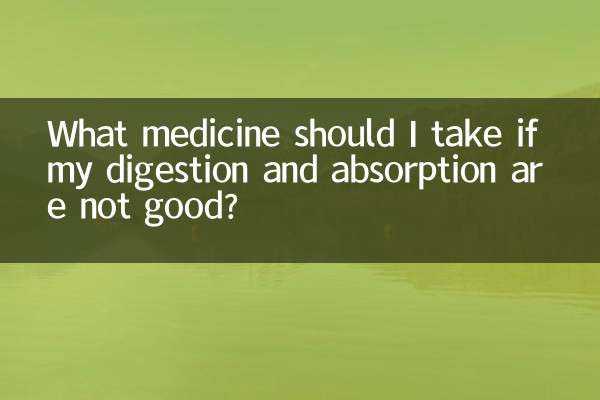What does drug half-life mean?
In the field of medicine, drug half-life is a very important concept, which directly affects the efficacy and safety of drugs. This article will explain in detail the definition, influencing factors and practical applications of drug half-life, and combine it with hot topics and hot content in the past 10 days to help readers better understand this concept.
1. Definition of drug half-life

Drug half-life (Half-life, t1/2) refers to the time it takes for a drug's concentration in the body to decrease by half. It is an important parameter that measures how quickly a drug is eliminated from the body, usually measured in hours (h) or minutes (min). The longer the half-life, the longer the drug stays in the body; conversely, the shorter the half-life, the faster the drug is eliminated.
| Drug name | Half-life (hours) | Common uses |
|---|---|---|
| Aspirin | 0.25-0.33 | Antipyretic and analgesic |
| Ibuprofen | 2-4 | Anti-inflammatory and analgesic |
| Digoxin | 36-48 | heart failure |
| warfarin | 20-60 | Anticoagulation |
2. Factors affecting drug half-life
Drug half-life is affected by many factors, including the following:
1.drug metabolism: The liver is the main organ for drug metabolism, and abnormal liver function will prolong the half-life of the drug.
2.Excretion pathway: The kidneys are the main pathway for drug excretion, and renal insufficiency can lead to drug accumulation.
3.age: The metabolism of the elderly slows down and the half-life is usually longer; the metabolism of children is faster and the half-life is shorter.
4.drug interactions: Certain drugs inhibit or induce metabolic enzymes, thereby affecting the half-life of other drugs.
| Influencing factors | Effect on half-life | Example |
|---|---|---|
| abnormal liver function | extend | Propranolol in patients with cirrhosis |
| renal insufficiency | extend | Penicillin use in patients with renal failure |
| Age (elderly) | extend | Diazepam use in the elderly |
3. Practical application of drug half-life
Drug half-life has important guiding significance in clinical medication:
1.dosing interval: Drugs with short half-lives require frequent dosing (e.g., every 4-6 hours), while drugs with long half-lives can be administered once daily or less.
2.drug accumulation: Long-term use of drugs with long half-lives may lead to accumulation poisoning, and blood drug concentrations need to be monitored.
3.Withdrawal time: Drugs with a long half-life may continue to work for several days after stopping the drug, so attention should be paid to subsequent effects.
Among the hot topics in the past 10 days, the half-life of the new coronavirus oral drug Paxlovid has triggered extensive discussions. The half-life of nimaterevir, the main component of Paxlovid, is 6 hours, while the half-life of ritonavir is 3-5 hours. This combination is designed to extend the action time of nimaterevir and improve the antiviral effect.
4. Summary
Drug half-life is a core concept in pharmacy and clinical medicine, which directly affects the efficacy and safety of drugs. By understanding the half-life, doctors can formulate dosage regimens more rationally, and patients can better understand medication precautions. In future drug development, half-life optimization will continue to be a key direction to improve therapeutic efficacy.
Among recent hot topics, research on drug half-life also involves the development of new anti-cancer drugs and Alzheimer's disease treatments. The latest progress in these fields further highlights the importance of half-life in personalized medicine.

check the details

check the details